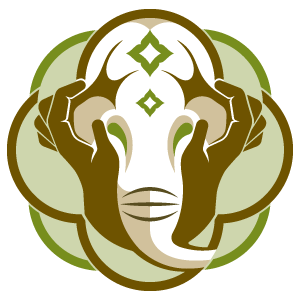What Makes a Good Sanctuary?
Currently we are faced with the ever growing issue of coexisting peacefully with wild animals as humans exponentially encroach into their natural habitats. Globally there are many dedicated organizations and governments working to mitigate this conflict. But what happens when the issue surrounds animals we live and work with on a daily basis and that live their lives in human care? In the past several decades a movement of awareness has begun to percolate throughout Western culture; that of animal welfare. Today we see sanctuaries popping up all over the news and social media, whose mission it is to rescue and rehabilitate wild animals and those that may have not received good enough care at their previous facility. But this raises the question, what makes a good sanctuary?
First and foremost is the level of care and attention given to basic animal welfare. Is each animal’s needs being met according to their natural history? For example a very large part of maintaining an elephant’s health is caring for their feet. This involves proper substrate for natural foot wear, the filing and trimming of nails and cuticles, and the maintenance of the foot pad. Coupled with that is nutrition; a proper diet to maintain a healthy weight. An overweight elephant will wear their feet unevenly and too much. Also, without the proper uptake of nutrients from a well-rounded diet, an elephant can grow brittle malformed nails and foot pads.
Dr. Kushal teaching mahouts foot care using the traditional hoof knife, the kukiri
Right after foot care comes skin care. An elephant must be able to either bathe themselves or be bathed to allow for proper exfoliation. Immediately thereafter they will want to scratch on logs or posts. Finally they will finish it off with a nice dusting to protect their skin from the sun and biting insects.
Elephants bathing with their mahouts at Elephant Conservation Center in Laos
Elephants walking and foraging at the EAF in Oklahoma
Second, and equally as important, is the ability to provide for mental stimulation through training, human interaction, and enrichment within their enclosures. Elephants are mega herbivores that spend 20 hours of their day foraging and eating. That being said, being able to occupy that amount of time during a day can be a lot of work for a keeper or mahout, but can be easily attained through the use of structured training sessions, exercise, and a variety of foods to forage.
Next, after the animals are taken care of, what is that establishment doing to further the cause for that particular species’ wild counterparts? The topic of elephants in human care has an almost unending spectrum of underlying issues. Be that as it may, how can the elephants that live with people best help and protect the elephants in greatest need? Shedding light on the raw reality of life in the wild for Asian elephants is essential for not only awareness of what is at stake, but it helps people understand how fragile most of these out of balance ecosystems are. A facility with the foresight to see the importance of breeding would stand out as one that does not want to see elephants go extinct.
After assessing a facility and its mission by this outline, being able to determine an honest, straightforward program may be a bit easier for those that cannot visit every single one we hear about. Being called a sanctuary does not guarantee it means it is a safe or clean option for the rescued animal. What does matter is a desire to provide a sustainable future for that animal and create a life where it will thrive.
Mother and calf out for a walk at the Elephant Conservation Center in Laos





